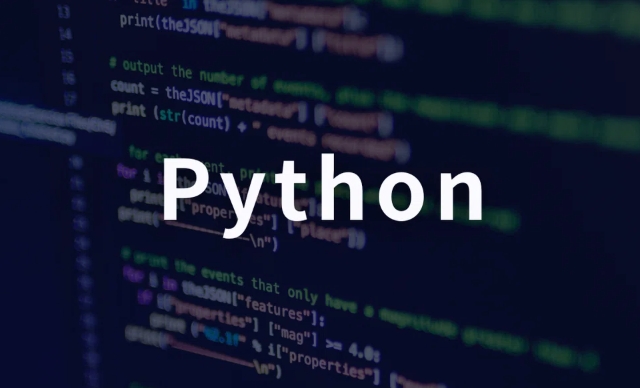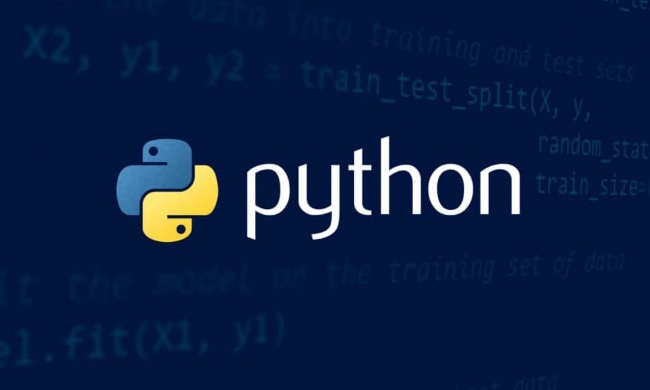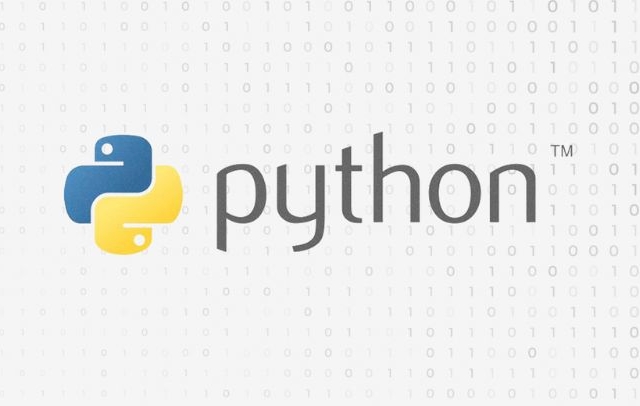Pandas can be used to quickly start data analysis, which is suitable for beginners; you can use pd.read_csv() to read data and pay attention to parameter settings; data cleaning takes up a lot of time, including processing missing values, type conversion and deduplication; analysis and visualization can be displayed through groupby and charts; results can be exported as file sharing. The specific steps are: 1. Use read_csv to read the data and specify parameters such as sep, header, etc. according to the situation; 2. When cleaning the data, dropna, fillna, drop_duplicates and type conversion such as to_datetime or to_numeric; 3. Use describe and groupby to perform statistical analysis and plot with plot; 4. Export the results to Excel or CSV file, pay attention to index settings; master these and practice more to familiarize yourself with detailed issues.

Data analysis is actually not that mysterious. You can use Python's pandas library to handle many common tasks. It is simple and flexible, suitable for beginners and daily use. If you already know how to click Python, you can basically get started right away.

Read data: Step 1 Don't get stuck
pandas supports reading data from various formats, such as CSV, Excel, JSON, etc. The most commonly used is pd.read_csv() . You only need to provide the file path to turn the data into a DataFrame, which is the most core data structure in pandas.
import pandas as pd df = pd.read_csv('data.csv')
Note: If the data volume is large or the format is complex, you may need to specify parameters, such as separators, encoding methods, column names, etc. For example:

- Is the separator not a comma? You can use
sep='\t' - No header? Add a
header=None - Just want to read the first few lines of test?
nrows=10can be done
If you encounter garbled code or error, first check whether the file encoding and field separator are correct.
Data cleaning: 90% of your time is spent here
The first thing to do after getting the data is to see if there are any missing values, outliers or format errors. Use df.info() and df.isnull().sum() to quickly understand the overall situation.

Common operations include:
- Remove null values:
df.dropna() - Fill the null value:
df.fillna(0)or fill the mean/median - Conversion type: For example, string to date
pd.to_datetime(df['date']) - Delete duplicates:
df.drop_duplicates()
For example, if you want to analyze sales data, but the column "sales" is actually a string, you have to convert it into a numerical form first:
df['sales'] = pd.to_numeric(df['sales'], errors='coerce')
This step is very critical. If the data is clean, the subsequent analysis will be reliable.
Data analysis and visualization: not just average
pandas comes with some statistical functions, such as df.describe() gives basic statistical information, df.groupby() implements summary by category.
For example, if you have an order form and want to see the total sales in different regions, you can write it like this:
df.groupby('region')['sales'].sum()
If you want to be more intuitive, you can directly draw pictures with matplotlib or seaborn:
df.groupby('region')['sales'].sum().plot(kind='bar')
Of course, chart beautification requires more details, but the basic logic is that simple.
Export results: Let others see your results
After analysis, you can export the results into Excel or CSV files for easy sharing or subsequent processing:
df_result.to_excel('result.xlsx', index=False)
Pay attention to whether to keep the index (index), it is not recommended to save it in general.
In addition, if you are reporting to your leader, you may also need to organize it into a table, or cooperate with Jupyter Notebook to write down the steps and conclusions clearly.
Basically that's it. Pandas is quick to get started, but if you really want to play well, you still have to practice and check more documents. Many problems are caused by small details, such as incorrect data types and incorrect spelling of column names. Don’t be anxious when debugging, just do it step by step.
The above is the detailed content of Using Python pandas for data analysis. For more information, please follow other related articles on the PHP Chinese website!

Hot AI Tools

Undress AI Tool
Undress images for free

Undresser.AI Undress
AI-powered app for creating realistic nude photos

AI Clothes Remover
Online AI tool for removing clothes from photos.

Clothoff.io
AI clothes remover

Video Face Swap
Swap faces in any video effortlessly with our completely free AI face swap tool!

Hot Article

Hot Tools

Notepad++7.3.1
Easy-to-use and free code editor

SublimeText3 Chinese version
Chinese version, very easy to use

Zend Studio 13.0.1
Powerful PHP integrated development environment

Dreamweaver CS6
Visual web development tools

SublimeText3 Mac version
God-level code editing software (SublimeText3)

Hot Topics
 How does Python's unittest or pytest framework facilitate automated testing?
Jun 19, 2025 am 01:10 AM
How does Python's unittest or pytest framework facilitate automated testing?
Jun 19, 2025 am 01:10 AM
Python's unittest and pytest are two widely used testing frameworks that simplify the writing, organizing and running of automated tests. 1. Both support automatic discovery of test cases and provide a clear test structure: unittest defines tests by inheriting the TestCase class and starting with test\_; pytest is more concise, just need a function starting with test\_. 2. They all have built-in assertion support: unittest provides assertEqual, assertTrue and other methods, while pytest uses an enhanced assert statement to automatically display the failure details. 3. All have mechanisms for handling test preparation and cleaning: un
 How can Python be used for data analysis and manipulation with libraries like NumPy and Pandas?
Jun 19, 2025 am 01:04 AM
How can Python be used for data analysis and manipulation with libraries like NumPy and Pandas?
Jun 19, 2025 am 01:04 AM
PythonisidealfordataanalysisduetoNumPyandPandas.1)NumPyexcelsatnumericalcomputationswithfast,multi-dimensionalarraysandvectorizedoperationslikenp.sqrt().2)PandashandlesstructureddatawithSeriesandDataFrames,supportingtaskslikeloading,cleaning,filterin
 What are dynamic programming techniques, and how do I use them in Python?
Jun 20, 2025 am 12:57 AM
What are dynamic programming techniques, and how do I use them in Python?
Jun 20, 2025 am 12:57 AM
Dynamic programming (DP) optimizes the solution process by breaking down complex problems into simpler subproblems and storing their results to avoid repeated calculations. There are two main methods: 1. Top-down (memorization): recursively decompose the problem and use cache to store intermediate results; 2. Bottom-up (table): Iteratively build solutions from the basic situation. Suitable for scenarios where maximum/minimum values, optimal solutions or overlapping subproblems are required, such as Fibonacci sequences, backpacking problems, etc. In Python, it can be implemented through decorators or arrays, and attention should be paid to identifying recursive relationships, defining the benchmark situation, and optimizing the complexity of space.
 How can you implement custom iterators in Python using __iter__ and __next__?
Jun 19, 2025 am 01:12 AM
How can you implement custom iterators in Python using __iter__ and __next__?
Jun 19, 2025 am 01:12 AM
To implement a custom iterator, you need to define the __iter__ and __next__ methods in the class. ① The __iter__ method returns the iterator object itself, usually self, to be compatible with iterative environments such as for loops; ② The __next__ method controls the value of each iteration, returns the next element in the sequence, and when there are no more items, StopIteration exception should be thrown; ③ The status must be tracked correctly and the termination conditions must be set to avoid infinite loops; ④ Complex logic such as file line filtering, and pay attention to resource cleaning and memory management; ⑤ For simple logic, you can consider using the generator function yield instead, but you need to choose a suitable method based on the specific scenario.
 What are the emerging trends or future directions in the Python programming language and its ecosystem?
Jun 19, 2025 am 01:09 AM
What are the emerging trends or future directions in the Python programming language and its ecosystem?
Jun 19, 2025 am 01:09 AM
Future trends in Python include performance optimization, stronger type prompts, the rise of alternative runtimes, and the continued growth of the AI/ML field. First, CPython continues to optimize, improving performance through faster startup time, function call optimization and proposed integer operations; second, type prompts are deeply integrated into languages ??and toolchains to enhance code security and development experience; third, alternative runtimes such as PyScript and Nuitka provide new functions and performance advantages; finally, the fields of AI and data science continue to expand, and emerging libraries promote more efficient development and integration. These trends indicate that Python is constantly adapting to technological changes and maintaining its leading position.
 How do I perform network programming in Python using sockets?
Jun 20, 2025 am 12:56 AM
How do I perform network programming in Python using sockets?
Jun 20, 2025 am 12:56 AM
Python's socket module is the basis of network programming, providing low-level network communication functions, suitable for building client and server applications. To set up a basic TCP server, you need to use socket.socket() to create objects, bind addresses and ports, call .listen() to listen for connections, and accept client connections through .accept(). To build a TCP client, you need to create a socket object and call .connect() to connect to the server, then use .sendall() to send data and .recv() to receive responses. To handle multiple clients, you can use 1. Threads: start a new thread every time you connect; 2. Asynchronous I/O: For example, the asyncio library can achieve non-blocking communication. Things to note
 How do I slice a list in Python?
Jun 20, 2025 am 12:51 AM
How do I slice a list in Python?
Jun 20, 2025 am 12:51 AM
The core answer to Python list slicing is to master the [start:end:step] syntax and understand its behavior. 1. The basic format of list slicing is list[start:end:step], where start is the starting index (included), end is the end index (not included), and step is the step size; 2. Omit start by default start from 0, omit end by default to the end, omit step by default to 1; 3. Use my_list[:n] to get the first n items, and use my_list[-n:] to get the last n items; 4. Use step to skip elements, such as my_list[::2] to get even digits, and negative step values ??can invert the list; 5. Common misunderstandings include the end index not
 Polymorphism in python classes
Jul 05, 2025 am 02:58 AM
Polymorphism in python classes
Jul 05, 2025 am 02:58 AM
Polymorphism is a core concept in Python object-oriented programming, referring to "one interface, multiple implementations", allowing for unified processing of different types of objects. 1. Polymorphism is implemented through method rewriting. Subclasses can redefine parent class methods. For example, the spoke() method of Animal class has different implementations in Dog and Cat subclasses. 2. The practical uses of polymorphism include simplifying the code structure and enhancing scalability, such as calling the draw() method uniformly in the graphical drawing program, or handling the common behavior of different characters in game development. 3. Python implementation polymorphism needs to satisfy: the parent class defines a method, and the child class overrides the method, but does not require inheritance of the same parent class. As long as the object implements the same method, this is called the "duck type". 4. Things to note include the maintenance






